AMD’s Terry Richardson: New Program Rewards Partners Who ‘Aggressively’ Sell AMD
‘If they choose to really understand and take the time to not only understand the AMD differentiation but start to aggressively position it, then there’s a reward,’ says AMD North America Channel Chief Terry Ricardson in an exclusive interview about the chipmaker’s new partner program.

Richardson Talks New Rebates, MDF And More For Partners
AMD North America Channel Chief Terry Ricardson said the chipmaker’s new partner program for commercial systems will reward those who “aggressively” position the company’s CPUs with financial incentives that will help them grow their business.
In an exclusive interview with CRN, Richardson said the Santa Clara, Calif.-based company launched its new invite-only partner program on Jan. 1 for VARs and national solution providers who sell AMD-based servers and PCs from OEMs like Hewlett Packard Enterprise, Dell Technologies and Lenovo.
[Related: Lisa Su On How AMD Is Building ‘Workload-Optimized’ CPUs]
“If they choose to really understand and take the time to not only understand the AMD differentiation but start to aggressively position it, then there’s a reward,” said Richardson, who previously worked in channel roles at HPE for 11 years.
The incentives include a volume incentive rebate program for CPUs, which Richardson described as “very competitive,” and market development funds. The benefits also include training, sales and marketing support and access to executives and technologists at AMD. And the incentives and benefits are better for partners who rank in the program’s higher “Elite” and “Executive” tiers.
Richardson said the rebate program is not only meant to help AMD continue to grow, it’s also supposed to help partners grow their businesses.
“We certainly would encourage partners to invest a substantial portion back into the business to help fuel growth,” he said. “But that decision is up to them: How much they take the profitability, how much they might create sales incentives or other things.”
What follows is a transcript of CRN’s interview with Richardson, who talked about how he built the new partner program, how the program works, why solution providers should the program and whether the program will eventually expand to include GPUs and products from AMD’s acquisition of Xilinx.
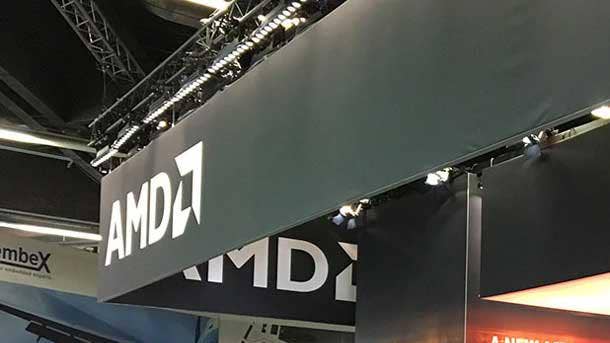
First off, tell me what you have done in your first year at AMD.
So a few things. Obviously, [I] came in and built out the team. I attracted some good leaders and some really talented channel account managers to the company. We significantly increased the team and really the biggest place that we showed up for the first time in probably a decade or more was with the [value-added reseller] community, where we historically had limited our coverage to distributors and the [national solution providers]. So we put a full-court press on taking the AMD story to the VARs. That was the first big thing: get the team structured right, bring talent in, start to define and shape the narrative that we wanted to explain to partners about the partnership opportunity and why they should be interested in AMD. So that was a big one.
I had a lot of work to do — probably not sexy — but getting the internal ecosystem aligned to the things that are necessary. So we historically had simplistic views of what you have to do in marketing or operations or even pre-sales or other things to really start to activate and enable channel partners to be successful. So that was quite fun. Not an insignificant task.
We also go to market on the commercial system side through OEM, so building and strengthening the AMD relationship with each of those OEMs, both the team inside of AMD as well as the channel leaders, my peers at companies like [Hewlett Packard Enterprise] and Dell and Lenovo and HP Inc., etc. [We] spent a lot of time just aligning on the opportunity, the vision, the strategy to grow together.
We put together a partner advisory board. I certainly recognize I don’t have all the answers, so we put a group of 15 partners together — all shapes and sizes, all competitive experience levels and OEM experiences, so a good cross section — and brought them together and did a little bit of informing them about where we’re headed, but a lot of listening to their input and feedback, part of which resulted in today’s conversation. We definitely were missing in terms of having a formalized, documented partner program, so we worked internally.
We had a little bit of help from [CRN parent company The Channel Company’s IPED research and consulting group] on things we should be thinking about. It turned into I wanted to do something quickly for North America, but the end result was doing something that would fit the commercial systems market worldwide, so it took us a little bit longer to roll it out. But as of January 1, 2022, we have a partner program. So that was exciting. We upped our presence and visibility with partners and started to do a little bit more in the PR world and conversations like this, so it’s just a couple of things, but it has been a busy first year but rewarding in many regards.
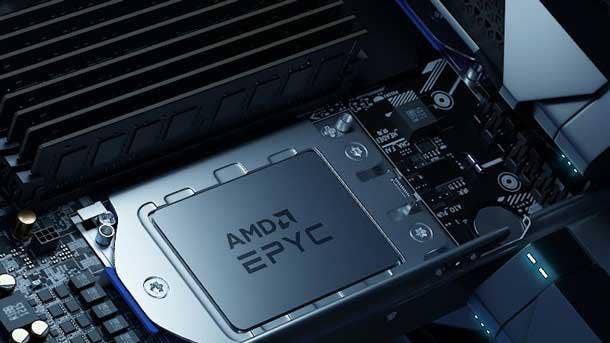
There are companies who have technically been part of an AMD partner program in the past, mostly the system builders. How would you distinguish what this partner program is versus any other partner programs that AMD has had in the past?
So this one is meant to be inclusive of today client and server, where I think, historically, we may have had a [system integrator] program for client or server parts — they were kind of different. So this is meant to be one that that fits both [server and client] from a commercial system standpoint. We tried to go into a lot of depth of being able to explain externally what is involved and what’s encompassed within the program. I think that was really important, where I think some of the other programs it was more like if you’re in the program, you knew, but if you’re outside, maybe it wasn’t quite as well documented. That’s one of the reasons that we wanted to have this call [with CRN] to start to get the word out. And we tried to put together the concept of, it’s certainly traditional, but not every partner is of the same size and scope, and so we introduced tiering. I don’t know [about] all of AMD’s other programs, but I think there may be some newness to the fact that it’s tiered, invitation only, and there’s certainly components beyond financial rebates, not the least of which is a requirement now for some technical and sales certification and training.
This is kind of an existential question for what you do: Why does there need to be a program like this in the greater partner ecosystem? And this is a question I ask on behalf of OEM resellers who maybe haven’t really had much involvement with semiconductor companies recently.
It’s really interesting. When I sit down and talk to partners – and I certainly have built many relationships over my couple of decades in the channel – their first or second question is, tell me about your program. I think they’re just conditioned that if they contribute effort and there’s any kind of requirements for training or time away from customers, [there’s a question of] “what’s in it for me?” So I think there’s a there’s a sense there. But what I think is really important is, many partners want to be recognized as a trusted advisor. And I think to really be effective as a trusted adviser, you have to have an informed opinion about certain things. And the only way to get an informed opinion is to really take some time to dig in.
So what I’m finding is two things. The technical community within the partners is really, really critical to understanding how technology — even technology in a semiconductor — can deliver real differentiated customer value. And that just takes time and experience to learn and go build. So that was one. The second is, I think many partners don’t know how to think about a semiconductor or a sub-component when they’re in the systems and solutions business. And if you let the customer decide, then I don’t think you’re really doing your job as a trusted advisor. I think if you bring an informed point of view, bring a recommendation that is fully formed, then I think you’re just serving your customers better and you’re probably strengthening your relationship. So having a partner program gives them the forum to gain access to our training, our resources (field sales, technical [professionals] and other key technologists and stakeholders inside the company) to build their understanding and awareness. In every way, it’s a competitive market. I think oftentimes partners are looking for a way to differentiate themselves and differentiate their approaches to serving and meeting customer needs.
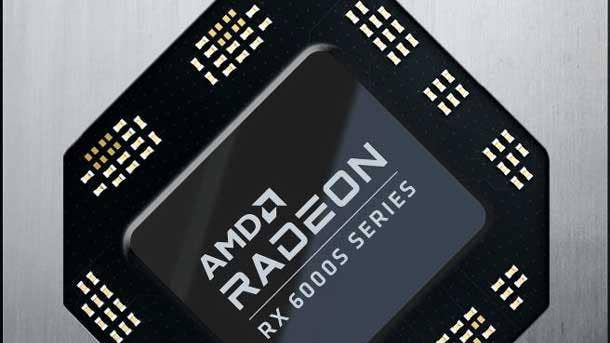
What’s the size of the cohort that’s in the commercial systems partner program right now?
So it’s a worldwide program. I’m sure it changes, because we’re onboarding new partners every month, but if you assumed approximately 500 worldwide partners, then that would be in the right neighborhood. I’m definitely better versed to speak about the North America program. It’s the same program everywhere, but obviously my scope and focus is North America so I can go deeper there.
Can you say how many partners are in North America?
Not specific. But if you’re thinking about roughly a quarter, matching the size of our business, you’d be in the right ballpark.
And since this is an invitation-only program right now, who is getting invited? What is the criteria for joining the program?
Part of it was, between myself and my team understanding some of the more significant partners that are capable and successful in either data center or client endpoint solution sales. Part of it is close collaboration with our key OEM partners about their channel makeup and key contributors.
And then there was a recognition that I don’t have unlimited resources, so if I want a [partner business manager] or a channel business development executive to really go do the meaningful work, we focused on what [CRN] might describe as the top 100, plus the [distributors] plus the [national solution providers]. That was the starting point, and then, we might just continue to evolve as either partners expose themselves to us or we come across a partnership that we think would really help us accelerate.
If there’s a VAR that’s not involved right now, and they were to ask you today, “Hey, I would like to get involved with this program,” would they be able to get involved this year?
They would be able to get involved. We’re certainly working with our distributors. We want as many data center- or client-focused solution providers as possible being aware of AMD and interested in selling AMD solutions to their customers. So we’re very aggressive with our distributors, and part of the program for them is to help us bring the AMD messaging capabilities to that very long list of VARs in North America. My team is just touching the top of the partner pyramid, and so we’re using distribution to start to accrue financial incentives from AMD [for which] there are minimum requirements. So they need to meet the minimum, and then they’ll start to participate, but they can start selling today and their motivation and compensation would really be as a result of the distributors’ efforts.
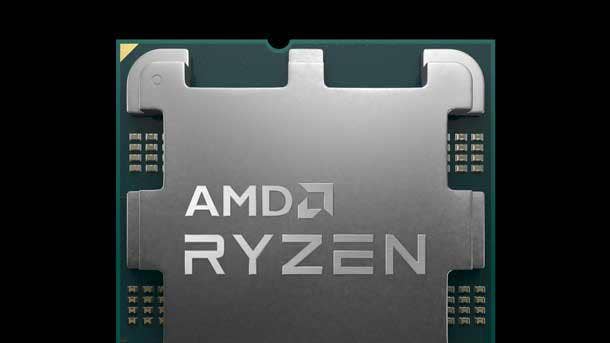
So let’s talk about the actual program itself. What are the various components of it?
There’s the traditional “what does the partner get access to and benefit from and what are their requirements.” So from a benefit standpoint, they get access to all of our content, whether it’s sales, presentations, collateral, all of our training. We organize our training around groupings of virtual classes that we call “missions,” so there are missions that are data center-focused, there are missions that are endpoint-focused, there are missions that are cloud-focused, and they get access to that.
And as you might imagine, there is introductory level, one-on-one type content that maybe [salespeople] want to consume to get the high-level positioning and benefits. And then there are [advanced courses] where you can dive as deep as you want from a technology perspective. They get access to many of our sales tools, sizing and configuration tools that are available online, but they certainly get access to that and assistance on how to best use them. They get invited to our variety of webinars and other events that we do.
They participate in a rebate program based upon volume. There are three tiers to the program. We call the three tiers “Select,” which is the entry level, then there’s an “Elite” level, and then there’s an “Executive” level. And the volume incentive rebate scales up as you progress by meeting the volume requirements to get to a tier as well as the training requirements.
Of course, they have coverage from someone on my team that, as you scale up, you participate more in [market development fund] type programs [for] the top tier partners. We’re doing a lot more in PR and executive sponsorship. We’re doing business planning with partners and have access to demo systems or seed systems that they can help place with customers if they’re not able to easily get access through one of their OEM partners.
So the benefits are meant to complement other vendors’ partner programs. We’re not trying to displace what our OEMs does to [incentivize] their channel. This is meant to be additive, so that if they choose to really understand and take the time to not only understand the AMD differentiation but start to aggressively position it, then there’s a reward.
On the requirements side, there are annual unit requirements. So we started out placing partners [in tiers] based upon their 2021 sell-out performance, and they have an opportunity to rise up the tiers. As their business increases with us this year, we’ll do a re-evaluation mid-year. They have training requirements, and they have sell-out reporting requirements. For the top-tier partners, we do business planning, as I mentioned before, but we do formal quarterly business reviews as well just to make sure that expectations and strategies are well-aligned to continue to grow the business.
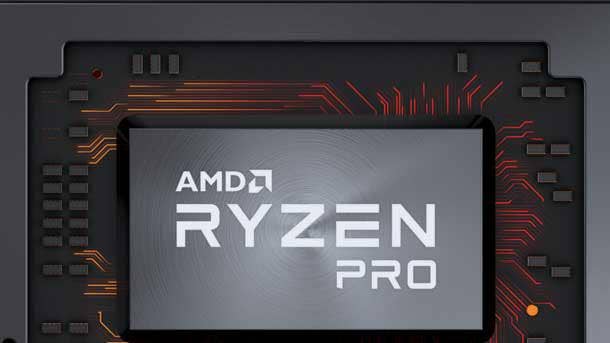
Can you talk more about the rebates? Intel has its own rebate program, so how competitive would you say AMD’s rebate program is?
So I have some familiarity with Intel’s program. The best source of an answer to that is when we presented the program and the 2022 proposed rebates for client and server, the feedback from the members of the advisory board was those are very, very competitive and very attractive. So I would say they probably compare favorably, but I’m not trying to match or better [Intel]. I’m just trying to do what I think is best for the partners that are wanting to spend more time in partnership with AMD.
What is the size of the rebates? I know they’re different based on tier and CPU type.
I don’t want to get into that publicly, because I’m trying to be careful on how I make it easy to tell our competitors what we’re doing, but they’re meant to be very attractive. So they’re not insignificant. Data center rebates are more than client, but they’re appropriate, and it’s on a per-CPU basis that we provide the rebates. So typically, the higher the core count, the greater the rebate, and that’s a lot to do with where we see the greatest differentiation, the greatest market interest in AMD, but we encourage partners to sell anything and everything in the AMD portfolio.
How much money is being spent for the North American partner program?
I can’t give you the dollar value, but I can [say] it’s a very significant year-on-year increase in the volume incentive rebate [budget], mostly because we’ve brought on so many new VARs into the program. So we’re making a big investment here. We’re making a big investment in MDF. But I don’t want to get any more specific than that, but the investment is matching the growth that we expect, and we’re looking to double the channel business again in 2022.
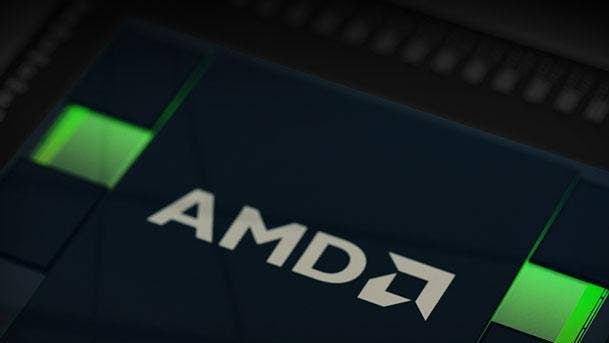
Intel has a long-running partner program, and it has evolved a lot. They launched a new one last year, Intel Partner Alliance, that brings together a lot of different partner types, and a lot of that is a function of how long they’ve been doing it. Obviously, it’s hard to stand up something in a year and say, “Yeah, we can match them on everything.” I imagine a lot of these VARs are part of Intel’s program, so why is it important for them to join AMD’s commercial partner program?
I think that’s a really good question. Again, I get back to some of my earlier comments: If you want to be a trusted advisor having an informed opinion, and by joining the program, you’re really getting closer AMD the company and understanding the current offerings as well the roadmaps and other things that they can come to expect, so they really become much better informed.
And I think in some cases, what I’ve seen is, partners traditionally maybe didn’t think about the semiconductor too much, where there’s a clear industry leader that has been historic from a market share perspective. But what AMD has done since the 2017 timeframe in the data center, with the first launch of our EPYC processors, the progress that we’ve made is really attractive, and I think more and more customers of all shapes and sizes are understanding the benefits associated with AMD technology.
And I think partners are quickly realizing that if they’re not in a position to recommend this to their customers, then they’re probably leaving themselves exposed from a competitive standpoint. So we certainly get a lot of credit for having a really competitive suite of offerings today and roadmap. What we’ve been focused on is just trying to get the word out and educating people and having a partner program gives us just another forum to help tailor that messaging.
One way I have thought about it is that there are plenty of partners that are seeing the benefits of AMD, and their customers are at least wanting competitive comparisons to understand the difference. And so, to me, it’s almost like why not participate because then you can partake in the volume rebates and get all these extra benefits.
And that gives them another way to invest in helping them grow their business. We don’t have a hard and fast requirement about how the rebates are used. We certainly would encourage partners to invest a substantial portion back into the business to help fuel growth, but that decision is up to them: How much they take the profitability, how much they might create sales incentives or other things. That would give them the flexibility to decide what they want to do with the funds that they that they earn.
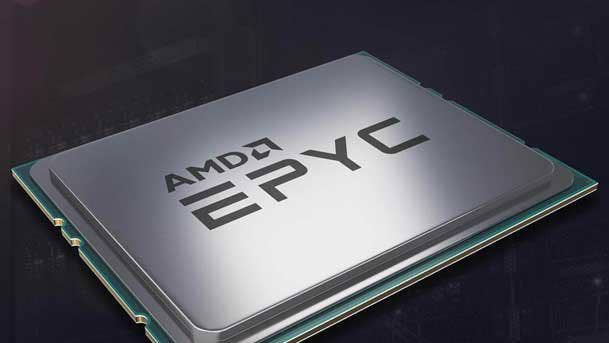
Does this program include GPUs at all?
Today, it’s focused on CPUs, but this is the — I don’t want to call it the 1.0 version, because that kind of minimizes it, and I think it’s a really good program now — but you can expect that we’ll look at other parts of the portfolio. Without making any promises, GPUs certainly would be in scope, incentives around cloud consumption we’re looking closely at — not ready to talk about anything or launch anything — but those are just a couple of examples of how we’ll continue to make the commercial systems partner program more and more comprehensive as well as representative of where the business opportunities are, where we think partners should be spending time with our customers.
AMD’s acquisition of FPGA maker Xilinx just closed. I know this is pretty early, but have there been any talks yet about how to integrate AMD’s and Xilinx’s partner programs?
I think as part of the acquisition planning, that’s been contemplated. That’s why we were clear to refer to this as the commercial systems partner program. And just as an aside, what [IPED head] John Machado and the IPED team are helping AMD think about is the overarching AMD partner program that incorporates all the facets of our business, inclusive of Xilinx. So that’s on the to-do list.
My experience in acquisitions is you sort of leave things alone for a while, but I would expect that the current Xilinx program would just continue until further notice, and the traditional AMD programs would continue until further notice. And then at some point where there’s a harmonization, you may expect a more [conjoined program], taking the best of both.
Why would you say the new partner program is important to AMD’s competitiveness?
As I said it, we’ve seen a real surge in interest in partners wanting to understand, “Hey, what’s going on?” The narrative around the company has been very strong, whether it’s the recent product releases that we’ve made the past couple quarters, both in the data center and the client side, whether it’s the financial performance of the company, whether it’s being in the news for the Xilinx acquisition. The news on the company has been good. Certainly we have a very strong executive leadership team led by Lisa Su, who is becoming more recognized publicly.
And I think partners have a real interest in learning more, so we’ve seen just a surge in interest and having a more formal program to describe what’s available for benefits and what are the requirements and making sure that it’s a good fit for both parties if we’re going to invest time and resources in trying to build a partnership. This just gives us a framework to build the discussion.